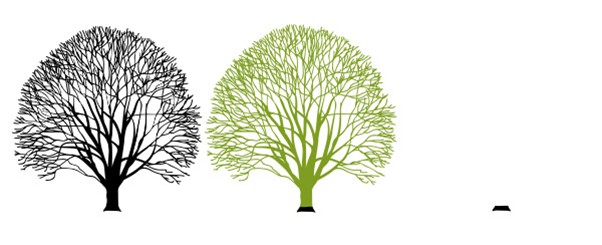Our experienced team offers safe and efficient tree removal, including directional felling in spacious areas and sectional dismantling in the built-up regions of Surrey and Hampshire.
Tree Felling & Dismantling
Tree Removal

Hedge Cutting Services
Our expert arborists are dedicated to keeping your hedges in perfect shape. From April to September, during the peak growth period, they provide efficient hedge cutting services as part of their routine maintenance schedule.
Tree Bracing: To Cable or Not to Cable
Every tree is unique, growing in its own distinct way. Stabilising your tree is crucial to extending its healthy life, regardless of its growth pattern. Sometimes, cabling or bracing is necessary to support a tree’s development. Let’s explore the benefits and drawbacks of cabling your tree.
Why Cable or Brace a Tree?
There are several reasons to consider cabling or bracing a tree. If a tree is healthy but has a potential weakness at one of its unions, a cable can minimise the risk of issues and help maintain its health. Conversely, if weakness has already developed, a brace can be added to prevent further damage. Additionally, if a tree is at risk of failure and located in a frequently visited area, cabling may be necessary to provide protection.
Drawbacks of Cabling a Tree
Cabled trees require regular monitoring to ensure their health and safety. Watering increases the tree’s weight, altering the necessary angles. As trees age, they continue to grow, becoming reliant on the cable and adapting to the changes. Consequently, cables cannot be removed from a tree. While cabling can sometimes save a tree and extend its life, it may be more appropriate to remove the tree in other cases.
Preventing the need for cabling is ideal for improving a tree’s health and longevity. When caring for a tree, consider the next one or two decades to effectively address potential issues before they occur.
Types of Cabling
There are two types of cabling used in tree care:
Static Cabling
Static cabling is installed when a branch cracks or is in immediate danger of failing. It is typically triangular and horizontal, used only when no other option is available. Static cabling can lead to decay at the installation site and cause tree rigidity, which may be problematic in high winds.
Dynamic Cabling
Dynamic systems offer more flexibility, allowing the tree to move naturally in the wind. The tree will also strengthen around the cable installation area. Dynamic cabling is commonly used to support branches or stems and should be installed horizontally and triangularly, like static cabling.
Protected Trees & Hedges
Tree Protection Orders (TPOs) and Conservation Areas are safeguarded by local councils, requiring approval from the Local Planning Authority (LPA) for any work involving these trees. Non-compliance can lead to fines over £20,000.
Our team is dedicated to tree preservation, following British Standard 3998 for all operations. We ensure the well-being of protected trees and assist with planning applications for TPOs or conservation area trees. Our qualified employees share our passion for preserving these magnificent specimens.
Stumpman Tree Surgery offers a seamless service by submitting the required application to the local authority at no extra cost upon acceptance of a quotation for tree works. Although this does not guarantee council approval, we provide expert advice on what is likely to be accepted, increasing the chances of approval on the first attempt.
Your questions answered
Got questions about tree work, permits, or costs? Our comprehensive FAQ page answers everything you need to know, from TPOs and property damage to pricing and best practices.
Find Your Answers Here